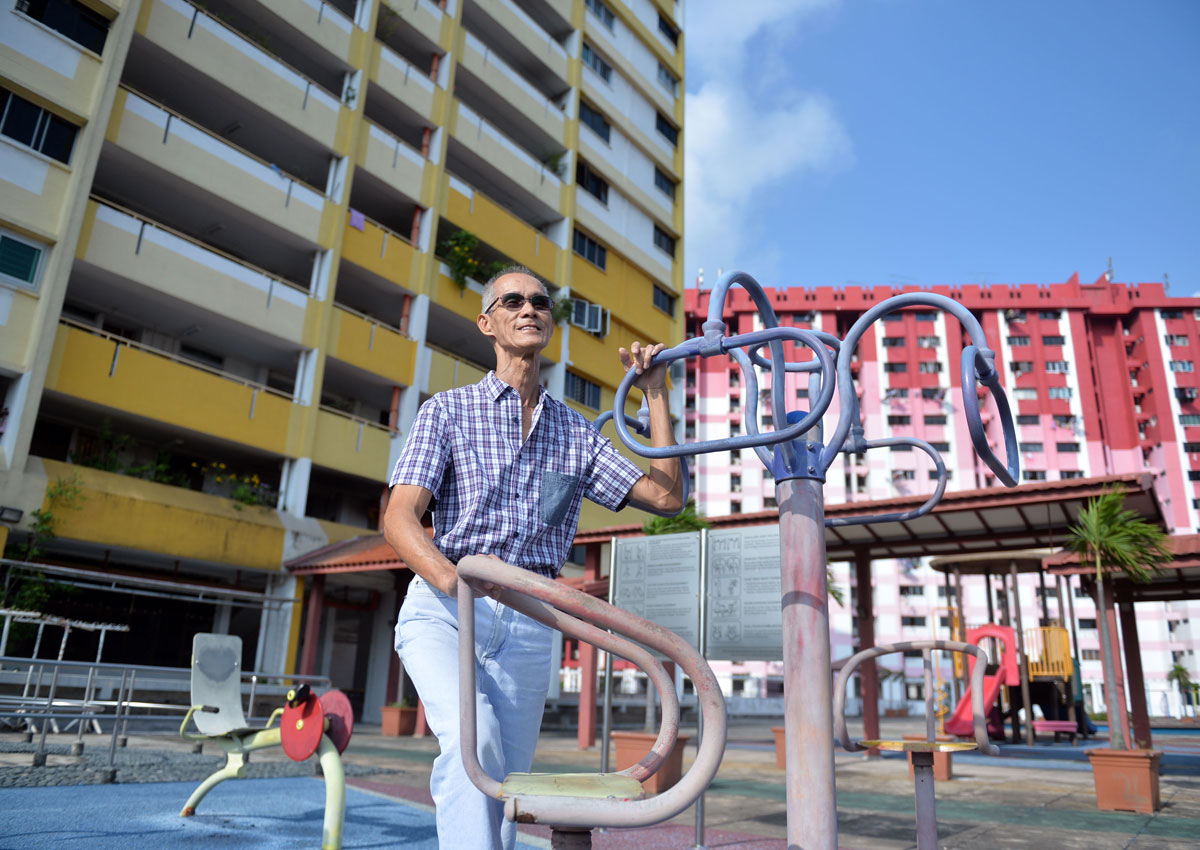Every day at 5.30am, retiree Victor Devan, 70, wakes up to the sound of the azan sounding from the nearby Abdul Gaffor mosque.
The Rochor Centre resident of 25 years – a familiar face to many in the area – has never needed an alarm clock.
Instead, the retired oil trader and father of two grown-up daughters relies on the Islamic call to prayer as the call to start his day.
The familiar sound is one of the things he will miss the most about Rochor Centre, apart from his favourite wonton noodles from a stall at one of the centre’s coffee shops.
Like most other residents there, Mr Devan will be moving to a new flat in Kallang in May, as the centre makes way for the new North- South Expressway by the end of this year.
A cluster of four Housing Board blocks, each painted mainly in red, blue, yellow or green, Rochor Centre is one of the few remaining landmarks from 1970s Bugis, where sailors, transvestites and night soil could be found before the area was cleaned up in the 1980s.
Completed in 1977, Rochor Centre was originally home to 183 shops and 567 households.
But these four busy blocks on the city fringe have lost some of their bustle. As of January, 106 shops had closed, while 36 households had moved out.
Rochor Centre is one of three iconic public housing estates soon to be demolished for redevelopment. The others are Dakota Crescent, built in 1958, and four low-rise HDB blocks in Siglap built in 1964.
Many long-time residents of the centre are wistful about leaving.
“This place is real heartland Singapore; it reminds me of the kampung that I grew up in when I was little,” said Mr Devan, an Indian who speaks English, Hokkien, Teochew and Cantonese, and enjoys the affectionate nickname “orh hia” (literally “black brother” in a Chinese dialect), given to him by neighbours and shopkeepers.
Moving is heart-wrenching, he added, and he and his wife will host a farewell party for their neighbours before they go.
“We have developed great relationships with our neighbours. Each neighbour is worth a million bucks,” he said.
Another long-time resident, Mr Ng Poh Pang, 73, who lives with his wife in a three-room flat where he raised his three children, said: “I honestly thought I would live here until the end of my days.”
Said his eldest son, Steven, 48, a shipping manager: “I always tell my two children stories of my childhood here – playing games with my neighbours, cycling at the playground. It’s incredible to see them play in the exact spot, and yet it saddens me that it’s all going to be gone.”
The HDB said that 91 per cent of the residents at Rochor Centre will move to replacement flats at the nearby Kallang Trivista. Of these residents, 15 per cent chose flats located near their old neighbours or relatives.
Said Jalan Besar GRC MP Denise Phua, who has served the residents for the past decade: “Life will not be the same but not all is lost… Residents can look forward to a more serene setting of greenery and peace different from that in busy Rochor.”
With Rochor Centre’s impending demolition drawing closer, Singaporeans have rushed to document it for the last time through social media posts, music videos and sketching events.
A local photographer known only as Nguan, who photographed the iconic centre last year, said: “I’m envious of its former residents, who got as close as you can to knowing what it’s like to live inside a rainbow.”
chiaytr@sph.com.sg
domteojy@sph.com.sg

This article was first published on March 31, 2016.
Get a copy of The Straits Times or go to straitstimes.com for more stories.






